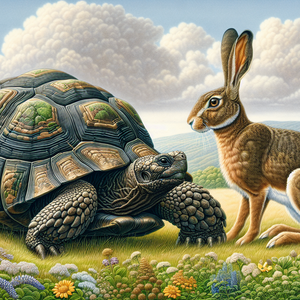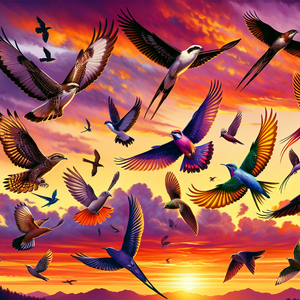The Life of a Pattern Taster: A Surreal Profession Rooted in Creativity and Connection

At its essence, pattern tasting is the act of interpreting and experiencing patterns beyond the ordinary. For many of us, patterns are something we see visually—floral designs on fabric, symmetrical tiles on a floor, or even the layout of a city’s skyline. For pattern tasters, however, patterns are multi-dimensional, capable of being "tasted," "touched," "heard," or even "felt" emotionally. A flowing spiral in a textile might evoke the silky sweetness of caramel or the warmth of a candlelit evening. A jagged geometric pattern might feel sharp and citrusy or sound like the rapid tapping of rain on a windowpane. Pattern tasters are essentially sensory translators. Their work involves interpreting patterns to evoke specific emotions, memories, or responses in others. They collaborate with a range of industries—fashion, interior design, architecture, and even artificial intelligence—to ensure the patterns they create or interpret resonate on a deep, human level. For example, a pattern taster might help design a workspace that “feels” calm and focused by incorporating patterns that evoke the natural flow of water or the soothing rhythm of soft waves. However, some pattern tasters take their philosophy to unusual levels. For instance, one pattern taster famously refused to acknowledge the disruptive sound of car horns in urban environments, instead tuning their attention to the rhythm of footsteps, the rustle of leaves, or the cadence of everyday life. This habit of filtering out discordant elements helps them focus on patterns that inspire creativity and emotional connection.
The Skills of a Pattern Taster
Becoming a pattern taster demands an extraordinary sensitivity to detail, an intuitive grasp of sensory connections, and a profound understanding of human emotions. Many pattern tasters exhibit traits of synesthesia, a neurological condition where sensory experiences overlap. This enables them to “see” sounds as colors, “taste” visual patterns, or “feel” the texture of emotions. For example, a pattern taster with synesthesia might describe polka dots as tasting "crisp like apples" or the color blue as feeling "smooth like satin." Beyond sensory perception, pattern tasters also need a deep knowledge of psychology and emotional response. Patterns have a direct impact on how people feel, behave, and interact with their environment. A pattern taster must be able to predict these responses accurately. For instance, they might advise a marketing team on creating packaging that feels nostalgic and warm, or help a tech company design user interfaces that balance simplicity with excitement. Creativity, observation, and adaptability are key skills as well. A pattern taster needs to be open to inspiration from any source—the natural world, urban landscapes, cultural traditions, or even personal memories. Similarly, collaboration is vital, as pattern tasters often work with professionals from diverse disciplines, from architects to neuroscientists.
Challenges in the Profession
While the life of a pattern taster is undeniably unique, it’s not without challenges. Subjectivity: What one person perceives as soothing, another might find unsettling. Because sensory experiences are deeply personal, pattern tasters must balance their own perception with research, audience feedback, and cultural considerations. Niche Profession: As a relatively new and unexplored career path, pattern tasting lacks formal institutions, training programs, and professional networks. Aspiring pattern tasters often need to carve their own paths, blending skills from art, design, and psychology to create a unique niche for themselves. Misunderstanding: Many pattern tasters struggle to explain their work to others. The abstract nature of the profession can make it difficult for outsiders to understand its value, leading to skepticism or dismissal. This can be frustrating for professionals trying to establish credibility in their field.
Applications of Pattern Tasting
Despite its niche status, pattern tasting has found remarkable applications in a variety of industries: Design: In fashion and interior design, pattern tasters help create textiles and wallpapers that evoke specific emotions or themes. A pattern taster’s input can make a fabric feel “playful” or a room feel “timeless.” Architecture: By interpreting how patterns influence mood and behavior, pattern tasters assist architects in designing spaces that feel cohesive and harmonious. For instance, a hospital waiting room might incorporate circular, flowing patterns to create a calming atmosphere. Technology: In the tech world, pattern tasters are becoming increasingly relevant. They collaborate with AI developers to train algorithms in recognizing and replicating human-like patterns of perception. Their insights help ensure that digital interfaces feel intuitive and human-centered. Marketing: A brand’s identity often relies on patterns—whether in its logo, packaging, or advertisements. Pattern tasters help ensure that these patterns align with the brand’s message, creating designs that convey excitement, sophistication, or nostalgia.
A Day in the Life of a Pattern Taster
No two days are alike for a pattern taster, but their work often involves a mix of collaboration, observation, and creation. In the morning, they might meet with a fashion designer to discuss the sensory “flavor” of a new collection. By afternoon, they could be consulting with a tech company on how to make a mobile app’s interface feel more “organic” and user-friendly. Between meetings, a pattern taster spends time observing their surroundings, drawing inspiration from the rhythm of city life, the texture of tree bark, or the interplay of light and shadow on a building’s façade. Creative experimentation is a big part of the job. Pattern tasters might sketch designs, paint abstract interpretations of emotions, or use tools like fabric swatches, soundscapes, and photography to capture the essence of a pattern.
Why Pattern Tasting Matters
In a world increasingly driven by efficiency and functionality, pattern tasting reminds us of the importance of beauty, emotion, and connection. Patterns are everywhere—in the products we buy, the spaces we inhabit, and the experiences we create. By interpreting these patterns through a sensory lens, pattern tasters enrich our lives in ways we often don’t realize. At its heart, pattern tasting is about storytelling. A well-designed pattern can evoke memories, inspire creativity, or simply make us feel more connected to the world around us. Pattern tasters challenge us to see the beauty in the ordinary and to experience life more fully.
The life of a pattern taster is equal parts surreal and inspiring. These professionals see the world not just for what it is but for what it could be—a canvas of textures, colors, and rhythms waiting to be explored. Through their work, they remind us to slow down, pay attention, and find meaning in the smallest details. So the next time a pattern catches your eye, ask yourself: What does it feel like? What story does it tell? And, if you’re feeling particularly imaginative, what would it taste like?
Experience Designer (Sensory and Emotional Design)
Experience design agencies, luxury brands, and companies specializing in experiential marketing
Responsibilities
Design environments, products, or services that evoke specific sensory and emotional responses, blending psychology, aesthetics, and functionality.
Collaborate with cross-disciplinary teams (e.g., architects, product designers) to create immersive experiences such as calming hospital interiors or vibrant retail spaces.
Use tools like mood boards, soundscapes, and material samples to prototype and refine concepts.
Synesthetic Product Designer
High-end furniture designers, sensory-focused startups, and innovation labs
Responsibilities
Leverage synesthesia (if applicable) or deep sensory understanding to design products that bridge visual, tactile, and auditory experiences (e.g., a chair that “sounds” soft or packaging that “feels” refreshing).
Work on multi-sensory product development for industries such as fashion, home goods, and consumer electronics.
Combine traditional design skills (e.g., CAD, prototyping) with an ability to interpret and evoke sensory feedback.
Environmental Psychologist (Design Consultant)
Architecture firms, research institutions, and urban planning organizations
Responsibilities
Analyze how physical spaces and patterns influence human behavior, mood, and productivity.
Advise architects and urban planners on creating environments that promote well-being, such as calm workplaces or inviting public parks.
Conduct user research and psychological studies to measure the impact of design elements on various populations.
AI Experience Specialist (Human-Centered Pattern Recognition)
Tech companies developing AI-driven UX tools, creative AI startups, and innovation labs
Responsibilities
Train AI systems to recognize and replicate human-like sensory and emotional responses to patterns, such as designing algorithms for intuitive interfaces or adaptive digital art.
Collaborate with data scientists and machine learning engineers to refine AI models with sensory insights (e.g., teaching AI how to interpret patterns that “feel” harmonious).
Stay up-to-date on the psychological and cultural aspects of sensory design to ensure AI outputs are relevant and meaningful.
Brand Identity Strategist (Pattern and Emotional Design)
Branding agencies, global corporations, and design consultancies
Responsibilities
Use pattern psychology to create cohesive brand identities that evoke specific emotions (e.g., trust, nostalgia, excitement) through logos, packaging, and marketing materials.
Partner with graphic designers and marketing teams to ensure visual patterns align with a brand's narrative.
Research cultural and sensory trends to create designs that resonate globally or within niche markets.


